The marvels of this world: Wisdom from novelists Kate DiCamillo, Claire Messud, and Ann Hood
Or, some of what I learned at the New Hampshire Book Festival
“People will tell you no, but it’s within your power to keep going …. I am a messy, deeply flawed human being, but I write stories, and you can too.”
—Kate DiCamillo
Today I’d like to share some writer wisdom from the New Hampshire Book Festival. As I’ve mentioned, I spent this past year helping to found and plan this new book festival, which took place last weekend in Concord.
First, here’s a little from beloved and wide-ranging children’s author Kate DiCamillo (Because of Winn-Dixie, The Miraculous Journey of Edward Tulane, The Tale of Despereaux, so many more), who spoke to a packed theater of 1300 third- through sixth graders last Friday morning.
DiCamillo talked to the kids about her childhood in Florida: “I was the shyest kid in the world, and there wasn’t enough money in the world to make me talk to a stranger,” she said. She talked about the wonders and oddities of her Florida childhood, the underwater mermaid show at Weeki Wachee Springs, and the glass-bottomed boats at Silver Springs. As a little kid on one of those glass-bottomed boats, gazing through the glass to the water below, she spotted a silver fish flashing beneath her, which led her to point out the silvery fish to the old woman next to her, a stranger. And then she dared to speak up about a turtle she saw, and the woman replied, yes, that is exactly right.
“The marvels of this world—the secret world inside our world—had inserted a tiny wedge in my heart,” DiCamillo said. She connected this moment of wonder to another moment , when her second-grade teacher was reading to the class from a chapter book, and all the kids were engrossed, even Tony, the mean boy who tripped DiCamillo every day, and who DiCamillo feared and loathed. That day in second grade, she saw that Tony was as rapt as she was, and she and Tony even exchanged a smile over this chapter, and for that moment at least, she saw him as a person.
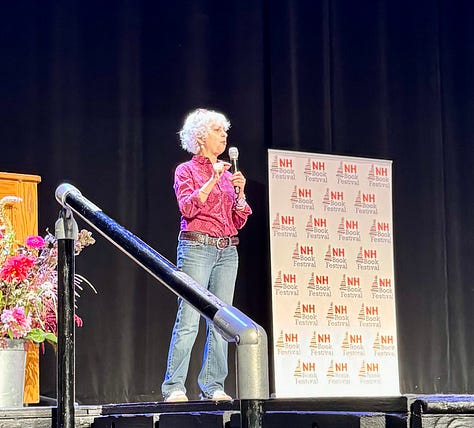
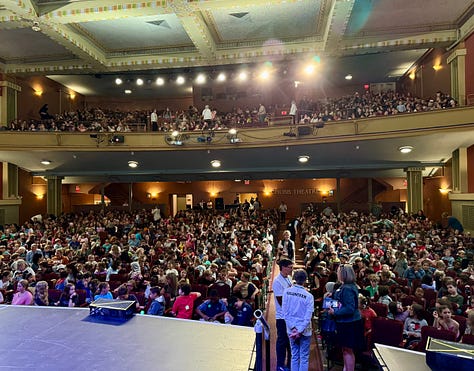
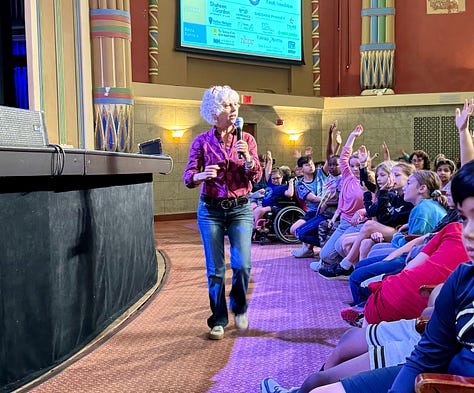
“Stories are glass-bottomed boat rides,” DiCamillo said, boat rides that can connect us to each other and can change lives. She asked the kids to raise their hand if a teacher had read aloud to them, and every hand in the theater went up. DiCamillo thanked the teachers for changing kids’ lives.
And she talked about her writing, the 400+ rejections she got between age 30 and age 36, when her first novel was accepted—all the no’s she encountered in those years. “People will tell you no, but it’s within your power to keep going,” she said. “I am a messy, deeply flawed human being, but I write stories, and you can too.”
Then she roamed around the theater with her microphone, answering the kids’ questions about her books, and about writing. It was amazing to see that every kid in that theater wanted to ask a question, and raised their hand.
For more on Kate DiCamillo, who’s won the Newbery medal twice, read this beautiful New Yorker profile from 2023.
*Addendum: A few days ago, Kate DiCamillo posted about her NH Book Festival talk on her FB page, and said this:
“At one point I asked the kids how many of them had a teacher who read aloud to them.
Every hand in that theater went up.
It was the most glorious moment-the whole building suddenly seemed as if it were filled with light.”
Next, some snippets from a conversation between novelists Claire Messud (This Strange Eventful History) and Ann Hood (The Stolen Child). Both Messud’s and Hood’s new books are big, ambitious novels with multiple points of view, long and/or multiple timelines, and settings on multiple continents.
Messud used family letters and her grandfather’s memoir as background for the novel, which covers 80 years. And Hood based her new novel on an array of elements, including the little-known story of trench art made by soldiers in France during World War I.
Moderator and novelist Katie Crouch asked Messud and Hood to talk about the huge plots, multiple decades, different timelines in their two novels: How do you do this? Both Messud and Hood said they didn’t know how they did it, but then elaborated.
“I have to have some sort of outline, something like ten items on a piece of paper, and a general sense of direction,” Messud said. She goes by the EL Doctorow dictum that writing a novel is like driving at night on a country road, and you can only see as far as the headlights, but you can get across the country that way.
Ann Hood noted that her algebra teacher used to loom over her saying that she’d need algebra later in life. “And I said, no, I’m going to be a writer. But it turns out that I have to do so much math, working out times, decades, ages, etc. in a novel. I do have post-its and an outline, that I refer to less and less as the writing progresses.”
“You research to find the weird details, the ones beyond the usual received details…there’s also a point where the balance shifts, and you’re writing to find out what you need to research.”
—Claire Messud
Both authors agreed that pacing and tension in their novels comes out of character, story, and research.
Hood described a screenwriting class that she took many years ago with Robert McKee, which taught her to look at each scene, and how it begins and ends: If a scene begins with something positive for a character, it needs to end with something negative, and vice-versa. “It’s a way to make sure your story has push and pull, tension.”
Messud talked about the balance of writing and researching in historical fiction. “You research to find the weird details, the ones beyond the usual received details,” she said. “There’s also a point where the balance shifts, and you’re writing to find out what you need to research.”
I always love to hear about other writers’ writing processes, and Ann Hood’s writing day might be the best ever. “I love my bed so much that I recreated the bed completely in both my New York and Rhode Island houses,” she said. “I don’t like to get up early, or go to bed late. I stay in bed in the mornings, spend an hour warming my engine, I call my cousin and gossip about another cousin.”
Then, from about ten am to two pm, Hood writes, in her bed, and then she gets up, takes a walk, knits, and reads. In the evening, her husband makes them each a martini, and that’s the end of her writing day. (An ideal routine, right?)
Messud teaches creative writing full time, and writes around the edges, or when she’s on leave. “When there’s no time, you find a way to get it done.”
And like Kate DiCamillo, both authors talked about reading and writing as portals to empathy. When you read a story about someone who’s nothing like you, that pushes back against polarization. Both authors linked some of our problems today, our polarized world, to insufficient reading.
When asked for reading recommendations, Messud, Hood, and moderator Katie Crouch offered a few mid-century (and British/Irish) women-writer suggestions: Elizabeth Bowen, Elizabeth Taylor, and Elizabeth Jane Howard, along with Danielle Evans’ story collection The Office of Historical Corrections and Susie Boit’s Loved and Missed. Click the photo above for more info on these books and authors.
I’ll leave you with some photos from our yard and road—New Hampshire is at peak fall color right now—and an ocean view in Nantucket, where I went for a writers retreat for a few days. And also this paraphrased Grace Paley quote that Ann Hood shared :
“We write about what we don’t know about what we know. If you already know, it’s boring.”
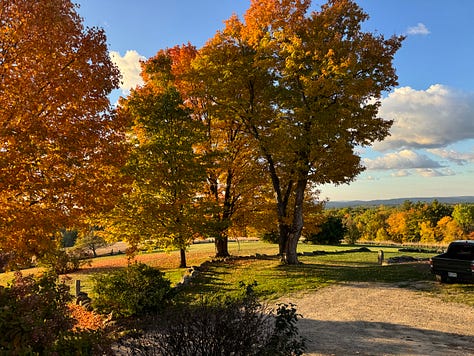
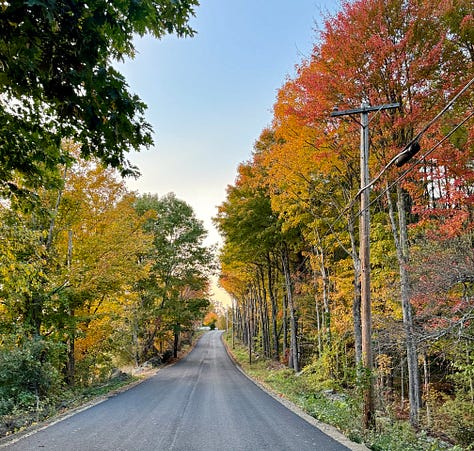
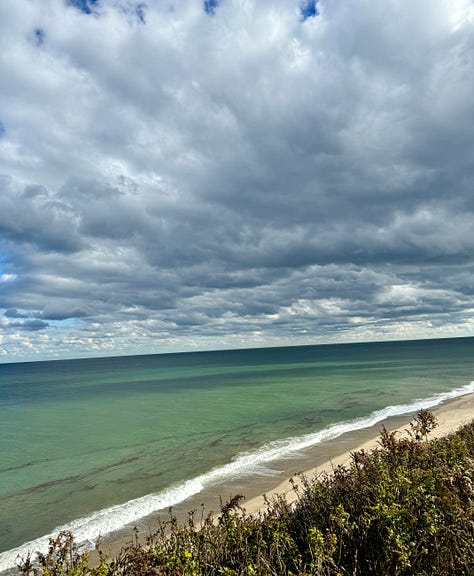




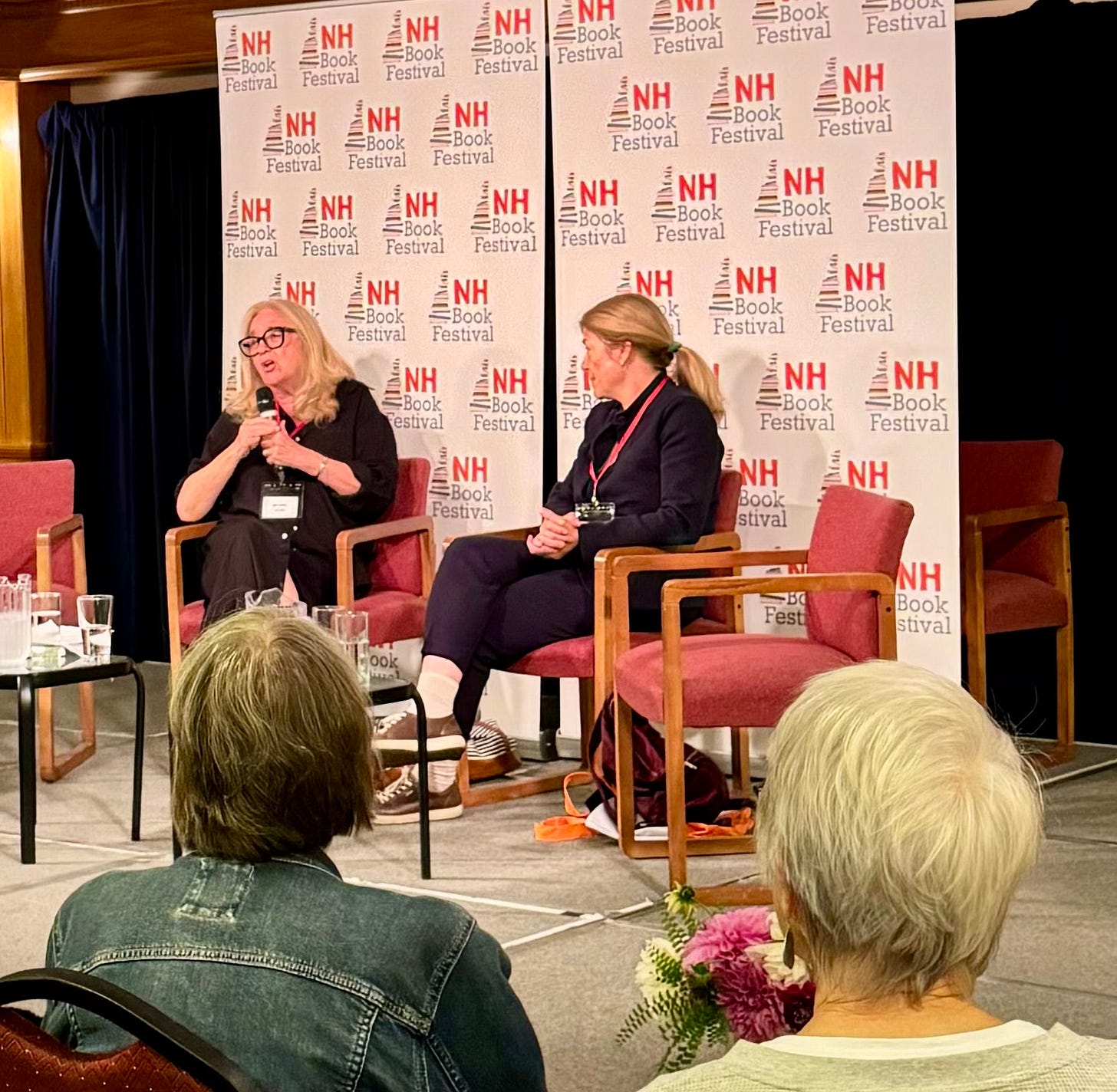
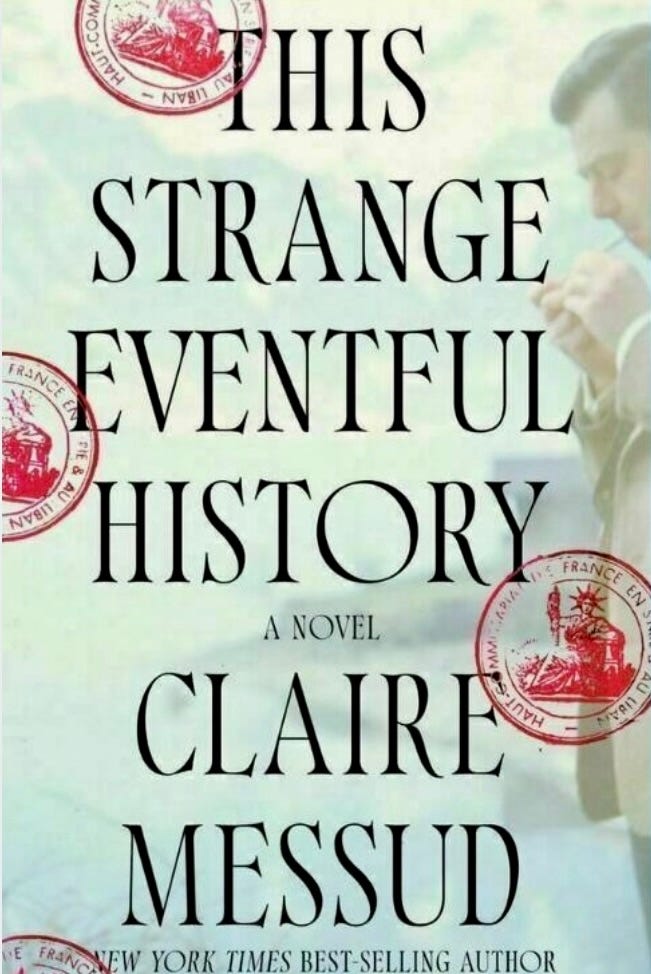
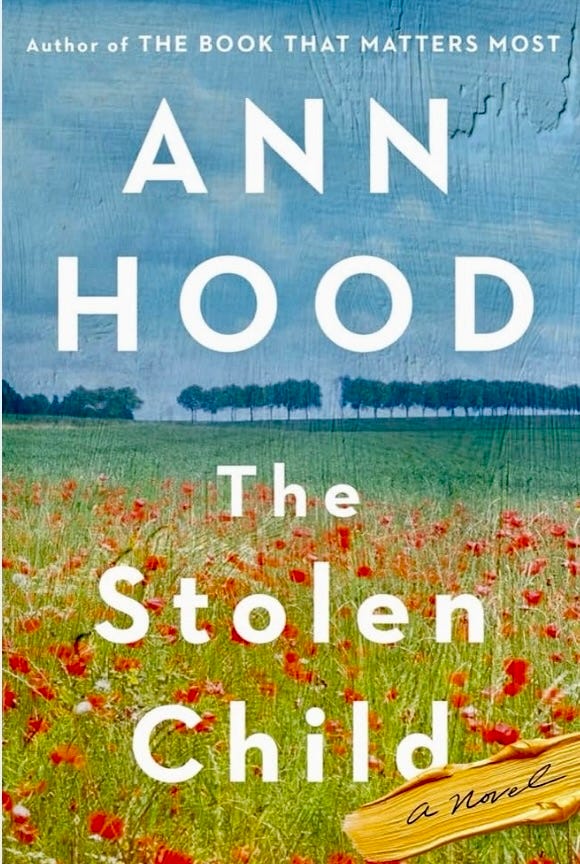

Congratulations on launching this festival! How thrilling to see that theater packed with young readers. And although I don’t write fiction, I loved Ann Hood’s advice on scene construction.
What an amazing event! I’m so happy for you and everyone involved. Also, Loved and Missed, by Susie Boyt was one of my favorite books of the year! Can’t wait to check the other recommendations. Thank you for this note! xN